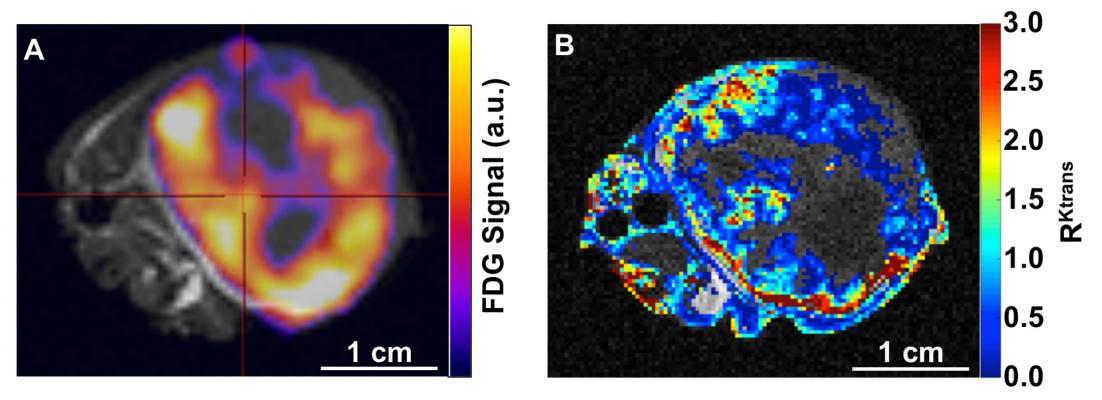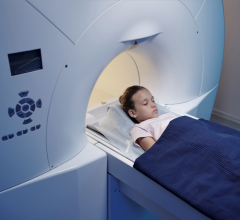
Panel A shows a flank A549 lung tumor in a nude mouse with combined 18F-FDG PET uptake (signal intensity in color) and T2-weighted anatomical MRI (grayscale). Panel B shows a similar tumor image with a relative permeability map for the tumor (color code) overlaid on a corresponding anatomical MRI reference. Regions identified as necrotic were not included in the DCE MRI analysis. Image courtesy of the University of Arizona Department of Medical Imaging.
October 13, 2016 — Cubresa Inc. recently announced the successful installation of their compact positron emission tomography (PET) scanner called NuPET for preclinical PET and magnetic resonance imaging (MRI) in the Department of Medical Imaging at the University of Arizona (UA).
PET and MRI are complementary imaging methods for better understanding disease and testing novel treatments in small animal subjects.
“The key is taking advantage of the strengths of each technique,” said Julio Cárdenas-Rodríguez, Ph.D., research assistant professor of medical imaging at UA. “Dynamic contrast enhanced (DCE) MRI shows vascular permeability or the ‘openness’ of tumors for delivery and uptake of nutrients such as glucose, while PET imaging using 18F-fluorodeoxyglucose (18F-FDG PET) shows glucose consumption by those cells.”
Areas in a solid tumor that are less permeable should also have low 18F-FDG PET uptake, simply due to less contrast agent being delivered, and not necessarily due to low glucose consumption by the cells. However, areas with high permeability that should also have high tumor uptake, but in fact show low intracellular 18F-FDG PET uptake could be an indication that the tumor is dying. This simultaneous dual-modality approach leverages the functional capability and anatomical accuracy of DCE MRI and the tremendous sensitivity of 18F-FDG PET.
“A single imaging mode is not enough to reveal all the permutations and gain a diagnostically useful understanding of what’s going on inside the tumor,” said Marty Pagel, Ph.D., a UA professor of medical imaging and director of the Contrast Agent Molecular Engineering Laboratory. “But, as we refine our approach, I’m confident that better interpretations will be made, and that could translate into better outcomes for patients.”
For more information: www.cubresa.com


 April 10, 2024
April 10, 2024 





![(A) PET images of [68Ga]Ga-DOTA-ZCAM241 uptake at baseline and 3, 7, and 12 days after injection as inflammatory arthritis developed in single representative individual mouse. Images are normalized to SUV of 0.5 for direct comparison between time points. (B) CD69 immunofluorescence Sytox (Thermo Fisher Scientific) staining of joints of representative animals during matching time points.](/sites/default/files/styles/feed_medium/public/PET%20Tracers.jpeg?itok=P5Di6MIe)


